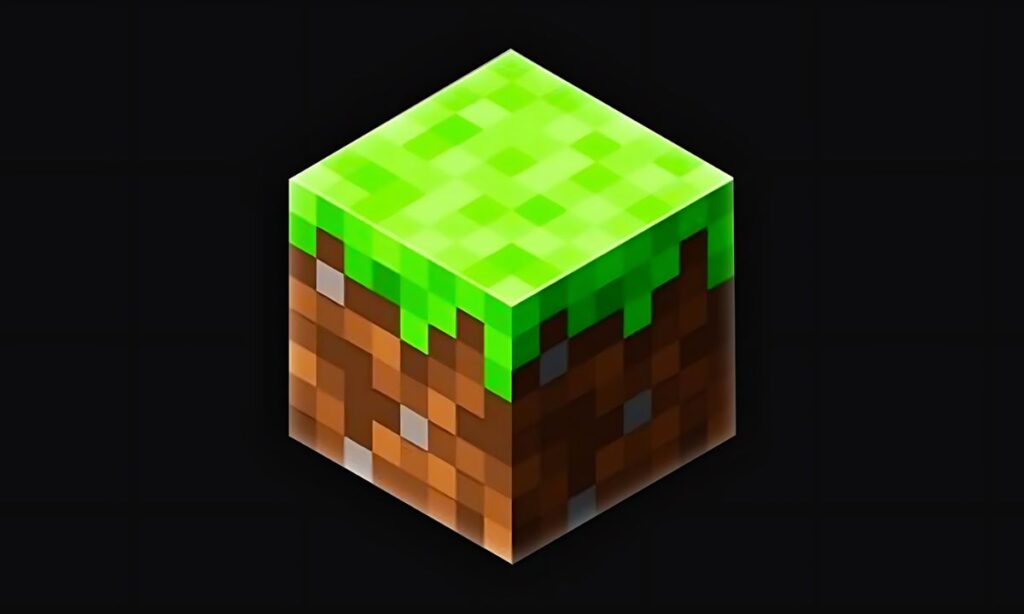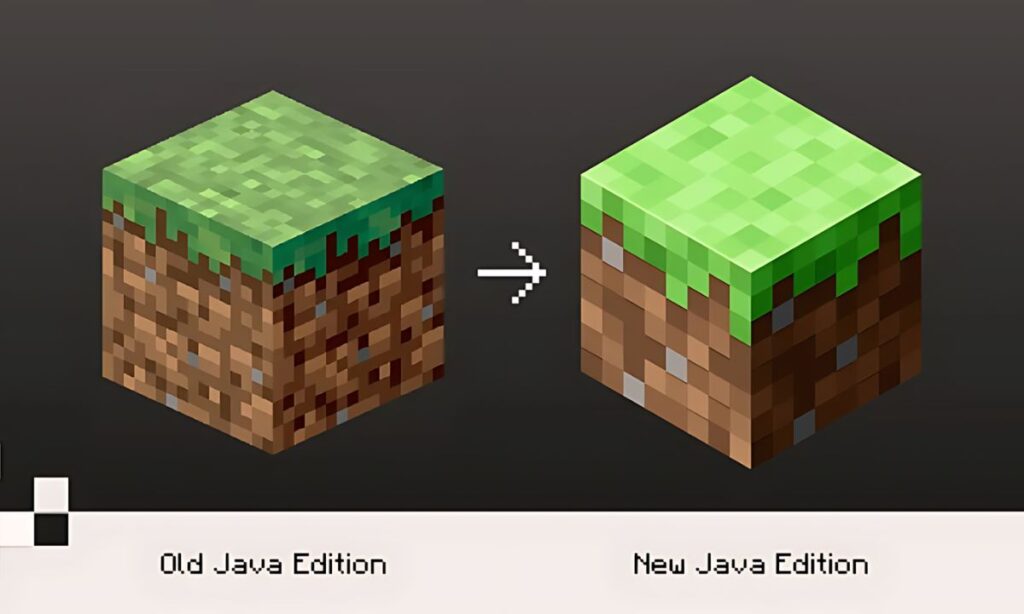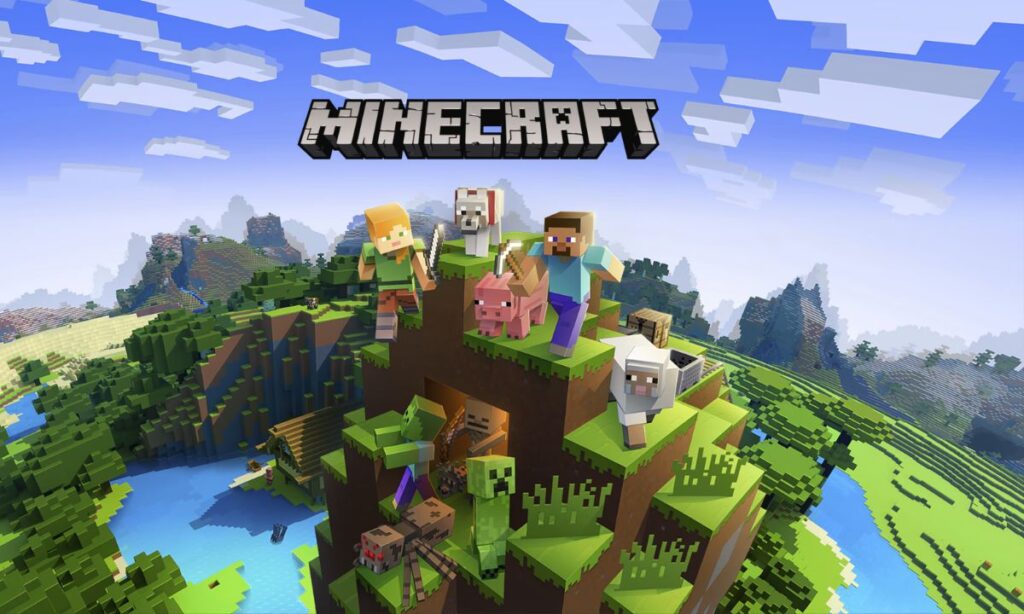Dive into the blocky, pixelated world of Minecraft, where game icons and banners reign supreme. This sandbox video game has captivated millions with its unique visual style and endless possibilities.
Let’s explore how Minecraft’s icons and banners have shaped the game’s identity and enhanced the Minecraft experience for players worldwide.
History of Minecraft (2009)
Minecraft’s journey began in 2009 when Swedish programmer Markus “Notch” Persson unleashed his brainchild upon the world. What started as a simple Java-based game quickly evolved into a global phenomenon, captivating players with its distinctive visual representations and open-ended gameplay.
Minecraft’s Development Over the Years
Since its humble beginnings, Minecraft has undergone numerous transformations, each adding layers to its iconic visual style. Here’s a timeline of key developments:
| Year | Milestone | Impact on Visual Style |
| 2009 | Alpha release | Basic block textures and simple UI |
| 2011 | Official launch | Refined textures, expanded color palette |
| 2014 | Microsoft acquisition | Consistent branding across platforms |
| 2016 | Education Edition release | New icons for educational tools |
| 2020 | Nether Update | Revamped Nether aesthetics and icons |
These updates not only expanded the Minecraft universe but also refined its visual identity. The introduction of custom textures and resource packs allowed players to personalize their Minecraft experience, further cementing the game’s place in gaming history.
“Minecraft’s evolution is a testament to the power of simple, iconic design. Its visual language has become a cultural touchstone.” – Game Design Expert
Understanding Minecraft Game Icons
At the heart of Minecraft’s visual language lie its game icons. These small yet mighty visual elements serve as the building blocks of the game’s interface, guiding players through the vast Minecraft universe.
What Are Minecraft Game Icons?
Minecraft icons are pixelated representations of in-game items, actions, and achievements. They’re the visual shorthand that allows players to quickly identify everything from diamond swords to crafting tables in their inventory. These icons are crucial for navigating the Minecraft experience, especially in survival mode where quick item recognition can mean the difference between virtual life and death.
Types of Icons in Minecraft
- Item icons: Represent blocks, tools, food, and other collectibles
- Building blocks (e.g., stone, wood, dirt)
- Tools and weapons (e.g., pickaxe, sword, bow)
- Food items (e.g., apple, bread, cooked chicken)
- GUI icons: Guide players through menus and interfaces
- Inventory slots
- Crafting grid
- Furnace interface
- Achievement icons: Showcase player accomplishments
- Milestone achievements (e.g., “Getting Wood” for punching a tree)
- Challenge completions (e.g., “Overkill” for dealing nine hearts of damage)
Designing Minecraft Game Icons
Creating Minecraft icons is an art form in itself. Designers must work within the constraints of Minecraft’s visual style while ensuring each icon is instantly recognizable. The process involves:
- Embracing pixel art: Working with a limited resolution to create clear, distinct images
- Using a limited color palette: Sticking to Minecraft’s signature color scheme
- Balancing simplicity with detail: Conveying information without cluttering the design
“The beauty of Minecraft’s icons lies in their simplicity. They’re instantly recognizable, yet leave room for imagination.” – Anonymous Minecraft artist
Tips for Designing Minecraft Game Icons
- Start with a clear concept: Know what you’re representing before you begin
- Stick to the pixel grid: Avoid anti-aliasing to maintain the crisp Minecraft look
- Use contrasting colors for visibility: Ensure icons stand out against various backgrounds
- Test icons at various sizes: Icons should be recognizable from 16×16 to 512×512 pixels
Factors to Consider When Designing Icons
- Scalability: Icons should be recognizable at different resolutions, from tiny inventory slots to large GUI elements
- Consistency: Maintain harmony with Minecraft’s overall aesthetic to avoid jarring visuals
- Uniqueness: Each icon should be distinct from others to prevent confusion during gameplay
Popular Minecraft Game Icons

Some Minecraft icons have become synonymous with the game itself. The grass block, diamond sword, and creeper face are instantly recognizable even to those who’ve never played the game. These icons have transcended the Minecraft universe to become cultural symbols in their own right.
Iconic Minecraft Characters
- Steve and Alex: The default player skins, representing the everyman (and everywoman) of the Minecraft world
- Creeper: The infamous exploding mob, whose hissing sound and pixelated face have become iconic
- Enderman: The mysterious teleporting creature, with its elongated limbs and glowing eyes
These characters’ designs have been distilled into iconic representations that players instantly recognize, enhancing the overall Minecraft experience and contributing to the game’s visual identity.
How Minecraft Game Icons Influence Gameplay?
Minecraft’s icons play a crucial role in the game’s mechanics:
- Inventory management: Quick item recognition allows for efficient organization and crafting
- Crafting guidance: Visual recipes help players create new items without constant reference to external guides
- Modding inspiration: The simple yet effective design of Minecraft icons serves as a template for custom content creation
The impact of these icons on gameplay cannot be overstated. They form a visual language that players learn to read fluently, enabling seamless interaction with the Minecraft universe.
Using Minecraft Banners
While icons form the visual backbone of Minecraft, banners add a layer of personalization and creativity to the game. Introduced in version 1.8, banners quickly became a favorite feature among players looking to add flair to their creations.
Crafting and Customizing Minecraft Banners
Banners in Minecraft are more than mere decorations. They’re a canvas for player expression, allowing for intricate designs that can represent anything from national flags to personal emblems.
Basic banner creation process:
- Craft a banner using wool and sticks
- Apply dyes for base colors
- Use patterns to create complex designs
- Layer up to 6 patterns for intricate results
This system allows for an astounding 16,777,216 possible banner combinations, giving players nearly limitless options for customization.
Designing Minecraft Banners
The art of banner creation in Minecraft is limited only by players’ imaginations. From simple stripes to complex heraldic designs, banners offer a unique way to leave your mark on the Minecraft universe.
Tips for Creating Minecraft Banners
- Start with a simple base design: Build complexity gradually
- Experiment with color combinations: Some colors blend better than others
- Use negative space effectively: Sometimes what you don’t add is as important as what you do
- Consider symmetry and asymmetry in your designs: Both can be visually appealing in different contexts
Tools and Techniques for Banner Design
- In-game tools: Crafting table and loom for basic designs
- Online resources: Banner design generators for planning complex patterns
- Community forums: Inspiration and tutorials from fellow players
Examples of Minecraft Banners
The Minecraft community has produced an astounding array of banner designs, showcasing the versatility of this feature.
Unique Designs and Creative Examples
- Recreations of national flags: From simple tricolors to complex emblems
- Abstract art pieces: Using geometric patterns to create striking visuals
- Character-inspired designs: Banners depicting popular Minecraft mobs or other game characters
Community-Created Banner Designs
The Minecraft community continually pushes the boundaries of banner design, with players sharing their creations on forums and in design competitions. Some notable examples include:
- Pixel art recreations of famous paintings
- Intricate Celtic knot designs
- Banners that create optical illusions when placed side by side
Minecraft Icons vs Banners: What’s the Difference?

While both icons and banners contribute to Minecraft’s visual identity, they serve different purposes within the game.
Iconic Differences in Minecraft
| Feature | Icons | Banners |
| Purpose | Represent items and actions | Decoration and identification |
| Design constraints | Fixed size and style | Customizable within set patterns |
| Impact on gameplay | Essential for navigation and inventory | Enhance aesthetics and community interaction |
| Customizability | Limited to resource packs | Highly customizable in-game |
Banners and Their Impact in the Game
Banners have evolved from simple decorations to integral elements of the Minecraft experience:
- Personalize player bases and structures: Adding a unique touch to builds
- Identify teams in multiplayer settings: Crucial for large-scale PvP events
- Tell stories in adventure maps: Using banners as signposts or to set the mood
The Importance of Minecraft Icons and Banners
These visual elements are more than just pretty pixels; they’re the building blocks of Minecraft’s visual language.
The Role of Icons in Minecraft
- Facilitate intuitive gameplay: Players can quickly understand game mechanics through visual cues
- Build brand recognition beyond the game: Minecraft’s icons are recognizable even to non-players
- Inspire fan art and merchandise: The simplicity of the icons makes them perfect for reproduction on various media
How Banners Enhance Gameplay
- Allow for personalization of player spaces: Making each Minecraft world unique
- Foster community building through shared designs: Players bond over banner creation and trading
- Add depth to roleplaying and storytelling within the game: Banners can represent factions, kingdoms, or personal achievements
Impact of Icons and Banners on Minecraft Community
The visual elements of Minecraft have fostered a vibrant community of creators and designers.
Community Engagement Through Icons
- Icon design contests spark creativity and engage the community
- Modding communities contribute new icon sets, expanding the game’s visual vocabulary
- Icons serve as shared cultural touchstones among players, transcending language barriers
Banners as a Form of Community Expression
Banners have become a unique form of in-game communication, allowing players to express their identities and allegiances without words. This has led to:
- Banner design sharing platforms: Websites dedicated to showcasing and sharing banner designs
- Collaborative banner projects: Players working together to create massive banner murals
- Banner design as a form of in-game currency: Some servers use rare banner designs as a form of trade
Future of Minecraft Icons and Banners

As Minecraft continues to evolve, so too will its visual elements. The game’s developers and community are constantly exploring new ways to enhance the Minecraft experience through visual design.
What Lies Ahead for Minecraft’s Visuals
- Potential for new icon styles or banner features: Perhaps 3D icons or animated banners?
- Impact of technological advancements on design capabilities: Higher resolutions and more complex patterns
- Community-driven innovations in visual customization: The modding community continues to push boundaries
Conclusion
Minecraft’s game icons and banners are more than just visual flourishes; they’re integral to the game’s identity and player experience. From guiding new players through their first night to helping veteran builders leave their mark on massive multiplayer servers, these visual elements have played a crucial role in Minecraft’s enduring success.
As we look to the future, it’s clear that Minecraft’s iconic visual style will continue to evolve, driven by both developer innovations and community creativity. The game’s visual language has become a cultural phenomenon, recognized and celebrated far beyond the gaming world.
Whether you’re a seasoned Minecraft veteran or a curious newcomer, there’s never been a better time to explore the rich visual tapestry of this beloved game. The combination of simple, effective icons and endlessly customizable banners offers a unique canvas for creativity and expression.
Frequently Asked Questions
What are Minecraft icons used for?
Minecraft icons help identify items, navigate menus, and represent achievements. They’re crucial for quick recognition during gameplay.
How can I design my own Minecraft icon?
Use pixel art software, stick to a 16×16 grid, use Minecraft’s color palette, keep designs simple, and test in-game with a resource pack.
Are there any legal concerns with using custom banners in Minecraft?
Avoid copyrighted imagery, be cautious with real-world logos, check server rules, and consider licensing if sharing designs publicly.
How do banners affect gameplay in Minecraft?
Banners serve as decoration, navigation aids, team identifiers, storytelling elements, and sometimes as in-game currency on servers.
Where can I find community-created designs for Minecraft banners?
Check Minecraft forums, Reddit, Planet Minecraft, YouTube tutorials, and Minecraft-focused Discord communities for banner designs.
Also Read : Retro Bowl Unblocked Games 66
